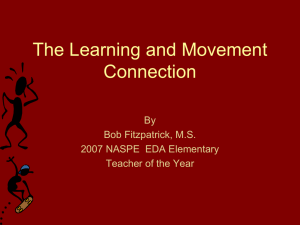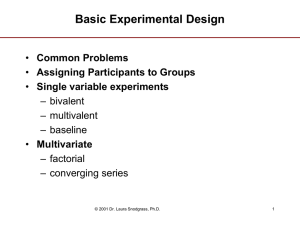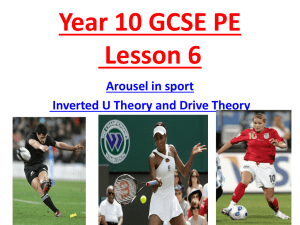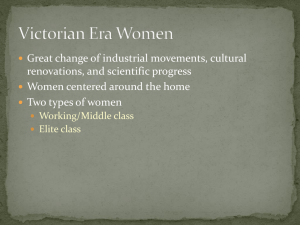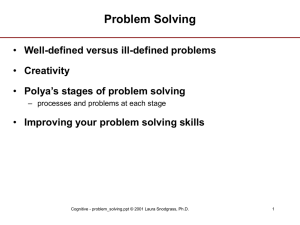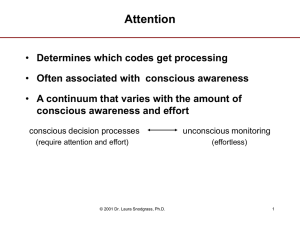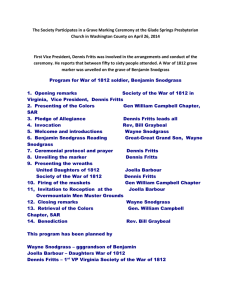Arousal and Cognition
advertisement
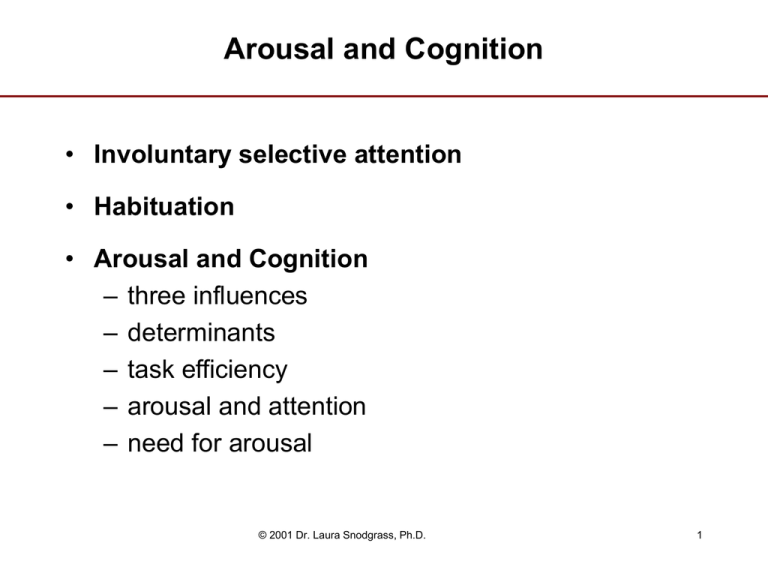
Arousal and Cognition • Involuntary selective attention • Habituation • Arousal and Cognition – three influences – determinants – task efficiency – arousal and attention – need for arousal © 2001 Dr. Laura Snodgrass, Ph.D. 1 Involuntary Selective Attention • Orienting Reflex - characteristic pattern of response when attention is automatically or involuntarily drawn – – – – Stop ongoing and physically orient (turn) to stimulus Increase in sensory sensitivity EEG = arousal Pause then decrease respiration, decrease in heart rate, blood vessels constrict in limbs and dilate in brain © 2001 Dr. Laura Snodgrass, Ph.D. 2 Involuntary Selective Attention • Orienting reflex is elicited by 3 aspects of the stimulus – intensity – meaningfulness – novelty or incongruity © 2001 Dr. Laura Snodgrass, Ph.D. 3 Habituation • With repeated exposure attention declines • Pattern of habituation – Orient to first 10-15 repetitions the response gradually declines – With many repetitions • EEG = low arousal drowsy • e.g. study by Gastault and Bert - after 8 minutes 1/2 drowsy many asleep © 2001 Dr. Laura Snodgrass, Ph.D. 4 3 Influences of Arousal on Cognition • Determines state of consciousness and type of thinking – abstract to concrete • Determines of efficiency of processing • Motivates certain types of cognition © 2001 Dr. Laura Snodgrass, Ph.D. 5 Determinants of Arousal • Amount and types of stimulation • Natural Rhythms and cycles • Internal factors © 2001 Dr. Laura Snodgrass, Ph.D. 6 Amount and Types of Stimulation • Intensity • Meaningfulness • Novelty or incongruity © 2001 Dr. Laura Snodgrass, Ph.D. 7 Natural Rhythms and Cycles • Circadian rhythm - sleep/wake cycle – peak of alertness varies over day – individual differences • larks and owls • Ultradian cycle - every 90 minutes – arousal varies and go from logical, abstract and reality oriented thinking to illogical, concrete, and fantasy oriented (daydreaming) © 2001 Dr. Laura Snodgrass, Ph.D. 8 Internal Factors • Drugs – depressants (barbiturates, alcohol) decrease – stimulants (caffeine, nicotine) increase arousal • Self-control – behavior, will power, concentration, biofeedback – manipulate environment to influence arousal © 2001 Dr. Laura Snodgrass, Ph.D. 9 Internal Factors • Individual Differences – basal arousal (metabolic rate) – rate of habituation – reactive arousal • introverts = amplifiers • extroverts = attentuators © 2001 Dr. Laura Snodgrass, Ph.D. 10 Arousal and Task Efficiency • Yerkes-Dodson Law – Inverted U-shaped function of arousal and task efficiency = generalization – More specifically: • simple task best at high arousal • medium task best at medium arousal • hard task best at low arousal – Not just task difficulty but practice also e.g. test anxiety vs. knitting © 2001 Dr. Laura Snodgrass, Ph.D. 11 Arousal and Attention • As arousal increases – attention gets more focused – less able to divide attention • Examples – boring versus interesting work and distraction © 2001 Dr. Laura Snodgrass, Ph.D. 12 Need for Arousal • Hedonic curve - need to basic level of arousal – too little = boring = negative affect – too much = over stimulated = negative affect – medium amount = positive affect • Sensory deprivation = negative • Reinforcing properties of stimulation © 2001 Dr. Laura Snodgrass, Ph.D. 13
